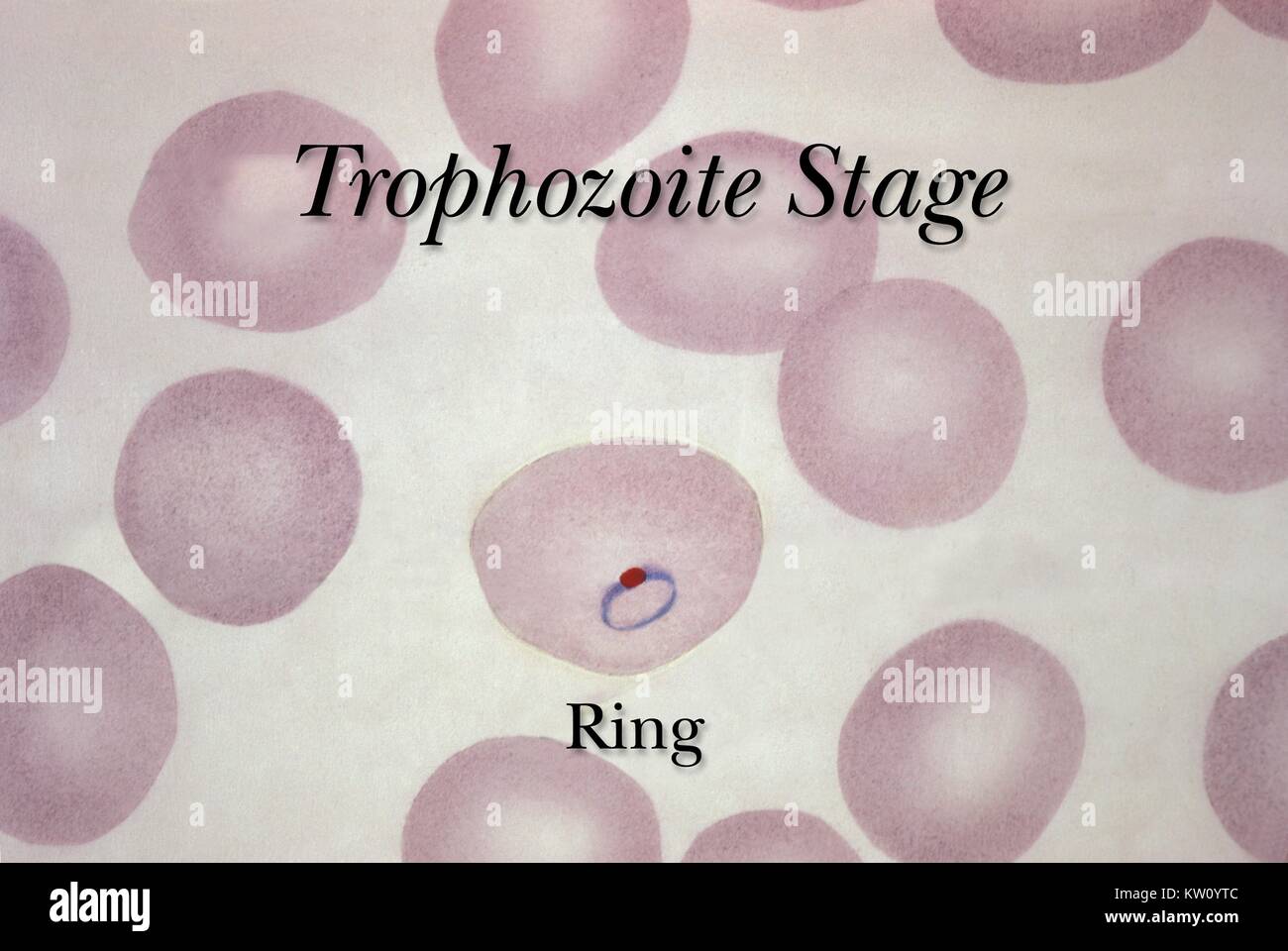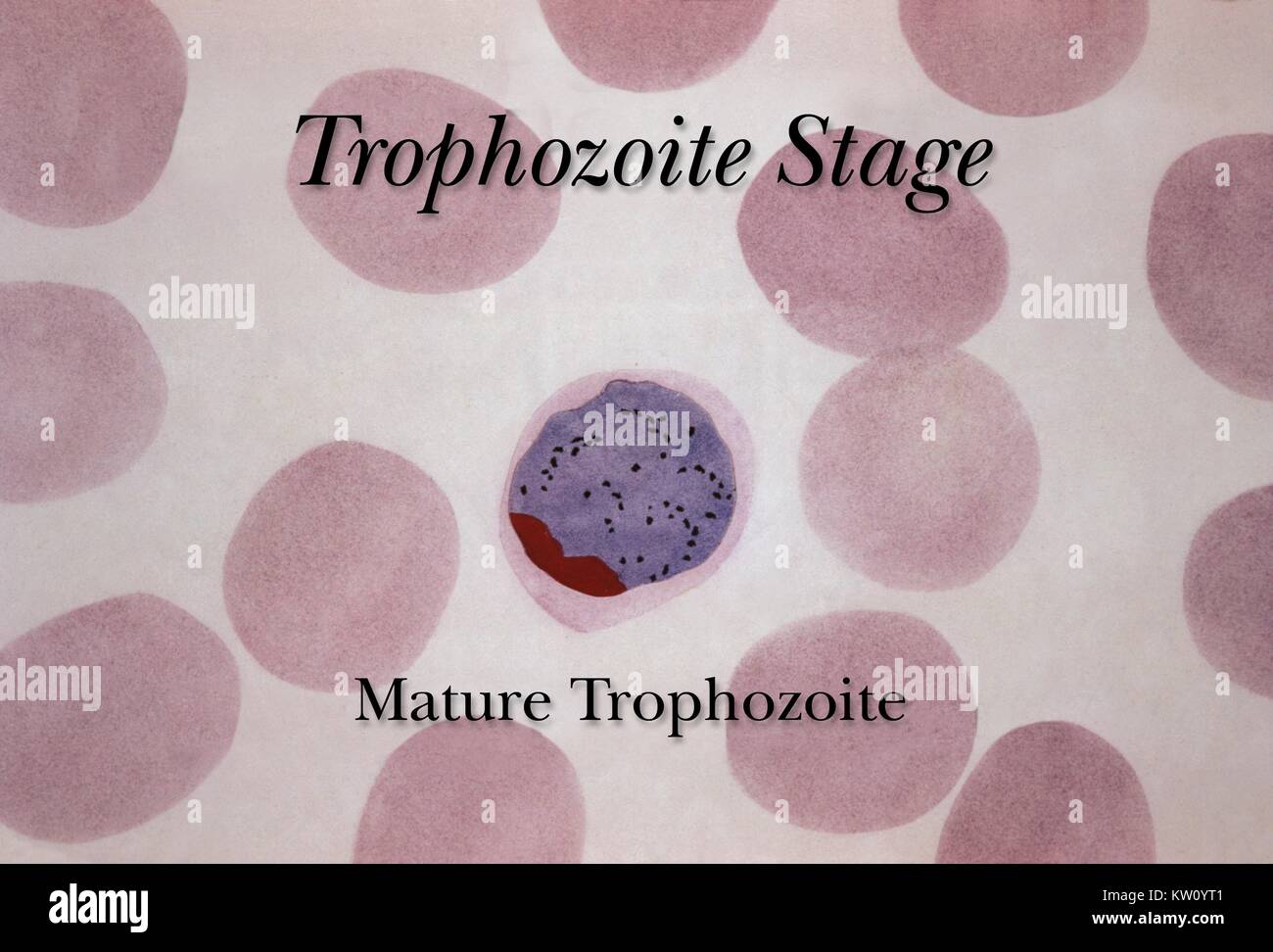Malaria is a protist that can come in many different shapes. Depending on their stage of development you may see malaria in a spherical, ring shaped, elongated or crescent shape. Their size can range from 1 to 20 microns. The following are points to help distinguish the different development phases and their correlated shapes.
Sporozite:
- This is the phase where the malaria is introduced to its new host. This is typically done from mosquito saliva when they are feeding on human blood.
Schizont:
- After sporozoites infect liver cells, it mature into schizonts. Schizonts contains merozoite inside of them.

Merozoite:
- After schizonts mature, they rupture an release merozoites. Once merozoites are released they travel to the bloodstream to go infect red blood cell. From there schizonts are formed again to make even more merozoite.

Trophozoites:
- This is the ring stage that matures into schizonts. Nutrients is being absorbed from the host during this phase.


Gametocyte:
- This phase is where the cells divide to make gametes. “The gametocytes, male (microgametocytes) and female (macrogametocytes), are ingested by an Anopheles mosquito during a blood meal” (CDC).

Oocyst
- The Oocysts grows inside the mosquito. It will later mature, then combust and release sporozoite.
Overview:
Well going into details of each shape and phased was a lot.

But now lets move on from that. You would think that after reading about their life cycles and it also being a Eukaryota that malaria would be multi-cellular but that is incorrect. Malaria is actually a single celled organism. It is a 23MB nuclear genome that contains 14 chromosomes which makes up approximately 5,300 genes. The genome is apparently the most (A + T) rich genome sequence to date (Gardener). Whether malaria is gram positive or negative is still unclear to me but if anyone finds out I would love to get feed back from you in the comment section. I believe it is gram negative but still need clarification

When malaria is at the end of the liver stage, it provokes the destruction of the host actin cytoskeleton, which destabilized the host cell. This results in a creation of membrane vesicle (merosomes), which helps this parasite travel from the liver to the bloodstream more safely and efficiently.
Most of their lives, malaria lacks a flagella and a cilia. Because of this their movement is based on gliding. “The parasites instead rely upon a unique system whereby they secrete sticky membrane-spanning adhesins from the front of the cell that are then pulled rearward via an internal actomyosin engine to propel the cell forward” (Gilson).
Also here’s an interesting video of a scientist doing research on the mobility of malaria.

Citations:
Gardner, M. J., Hall, N., Fung, E., White, O., Berriman, M., Hyman, R. W., … Barrell, B. (2002). Genome sequence of the human malaria parasite Plasmodium falciparum. Nature, 419(6906), 498–511. doi:10.1038/nature01097 https://www.ncbi.nlm.nih.gov/pmc/articles/PMC3836256/
Gilson, P. R. (2009, December 17). Malaria Parasites Do the Stick-and-Slip Shuffle. Retrieved from https://doi.org/10.1016/j.chom.2009.11.011
Institute of Medicine (US) Committee for the Study on Malaria Prevention and Control; Oaks SC Jr., Mitchell VS, Pearson GW, et al., editors. Malaria: Obstacles and Opportunities. Washington (DC): National Academies Press (US); 1991. 6, Parasite Biology. Available from: https://www.ncbi.nlm.nih.gov/books/NBK234327/
https://msu.edu/course/zol/316/psppscope.htm
https://www.cdc.gov/malaria/about/biology/index.html
https://www.sciencedirect.com/topics/immunology-and-microbiology/merozoite
https://malariajournal.biomedcentral.com/articles/10.1186/1475-2875-12-176
https://mbio.asm.org/content/8/2/e00139-17






Christina,
I love how you incorporated a great level of detail in your blog post. Awesome pictures and explanations! I think you did a fantastic job explaining the different developmental stages of malaria. Additionally, I found it very interesting how Malaria is neither gram negative nor gram positive. I had the similar issue of being able to distinguish the bacterial species that causes Tuberculosis to be either gram negative or gram positive bacteria.
-Simi P.
Hi, I really enjoyed reading your post. I like how you inserted pictures to show how the shape changes throughout the development stage. Before reading your entire post I thought that Malaria was multi-cellular and could be stained. I also enjoyed the video at the end of your post that showed the mobility of Malaria.
-Faith